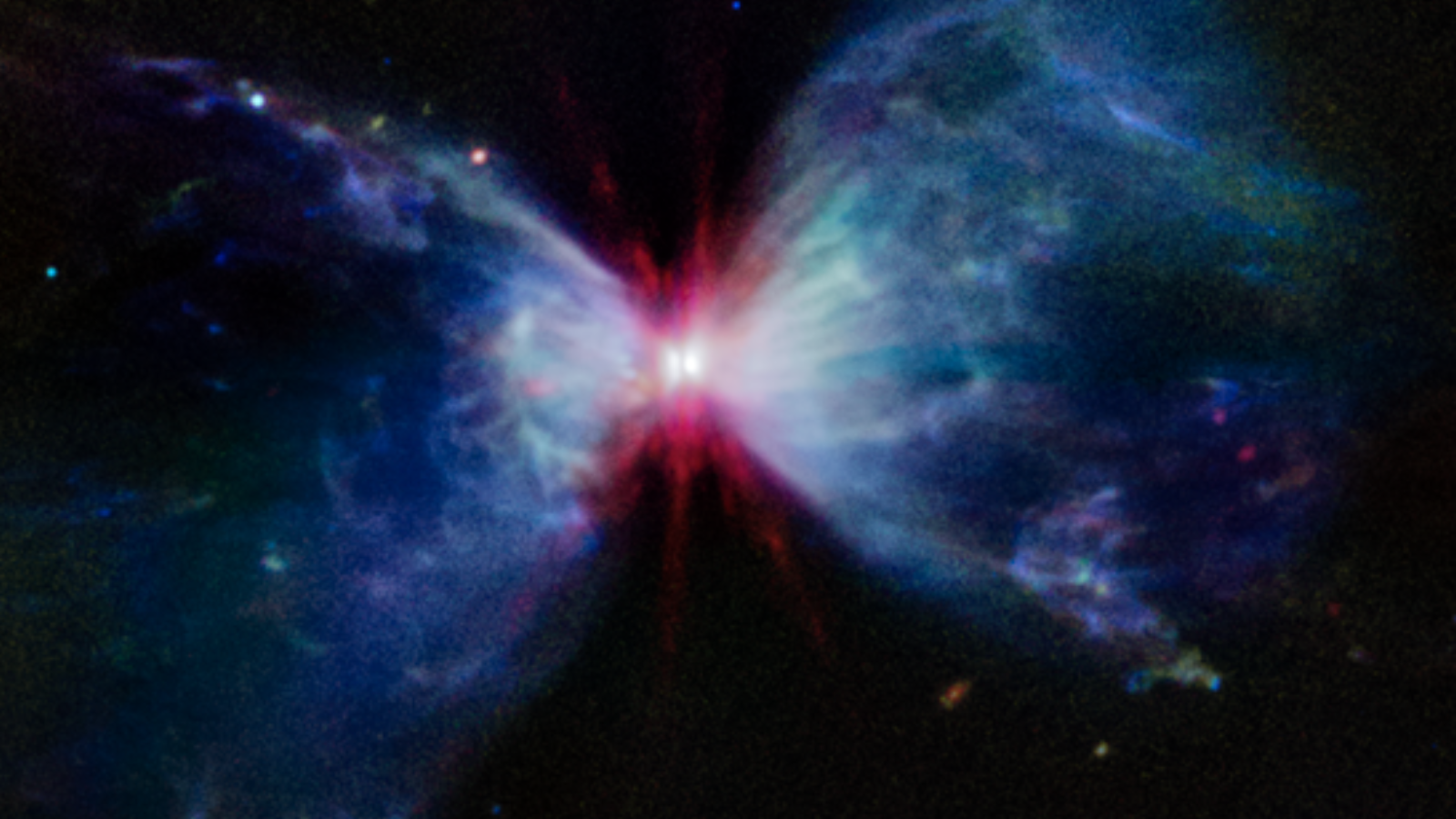Just in time for Independence Day, NASA has released a stunning image from the James Webb Space Telescope (JWST) that shows incredible red, white and blue fireworks erupting in the cosmos. While the U.S.
celebrates its birthday, this cosmic "rocket's red glare" is actually the violent eruption of an infant star at the heart of the blue and white gas and dust cloud, or nebula , that birthed it. The nebula in question is called L1527 , which is located around 460 light-years from Earth in the constellation Taurus . Resembling a cosmic butterfly , the nebula's central "body" is a glowing protostar , estimated to be around 100,000 years old.

If that seems ancient — and it certainly is, compared to the 248-year-old United States — remember that our star, the sun , and the solar system around it are over 4.5 billion years old. In fact, the stellar object at the heart of this nebula isn't even a fully fledged star yet.
These cosmic fireworks mark the process by which the protostar is transforming into a main sequence star like the sun. Birth of a nation and the birth of a star Stars are born from vast molecular clouds when overdense patches gather more and more mass, eventually collapsing under their own gravity. This forms a protostar, which then continues to harvest material from the postnatal cloud of gas and dust that remains from the molecular cloud that birthed it.
This process continues until the protostar has gathered enough mass for the pressure and temperature at its c.
















